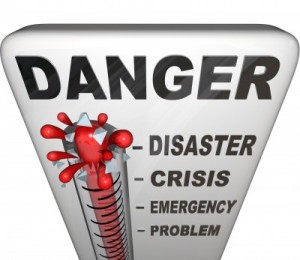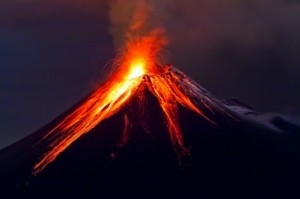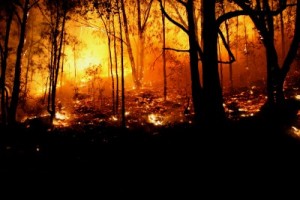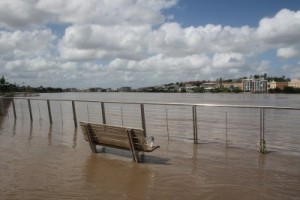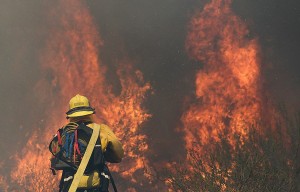
Another dangerous wildfire in California. Courtesy of FireRescue.com
Over 1,600 firefighters, seven retardant tankers, and a dozen helicopters are attempting to control a wildfire burning 90 miles east of Los Angeles in the San Jacinto Mountains.
The fire started on Wednesday, August 7, 2013, and spread from 2,000 acres to 25 square miles overnight. It has already destroyed over 26 homes, and if it continues to burn at its current rate, it could impact more than 500 more residences, forcing more than 1,800 people to evacuate the area.
Evacuation orders covered the rural communities of Cabazon, Poppet Flats, Twin Pines, Edna Valley, Vista Grande, and several camping and hiking areas.
Second Time Around
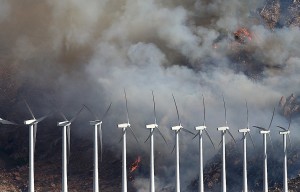
California wildfire burning close to wind towers in the San Jacinto Mountains. Courtesy of California Fire News
This is the second major wildfire in the San Jacinto Mountains this summer. A blaze that erupted in mid-July spread over 43 square miles on peaks above Palm Springs, burning seven homes and forcing 6,000 people out of Idyllwild and neighboring towns to evacuate.
This fire, however, is burning in the footprint of the 2006 Esperanza Fire.
California Fires
Most of Southern California’s severe wildfires are caused by Santa Ana winds that spin a clockwise flow of air into the region.
This week’s fire, however, was caused by a counter-clockwise flow over northwest California. The National Weather Service expects that conditions could change next week, but hopefully, the fire will be well contained by then.
